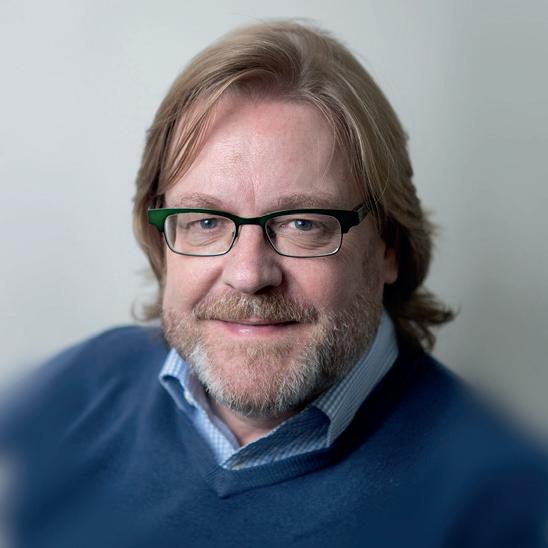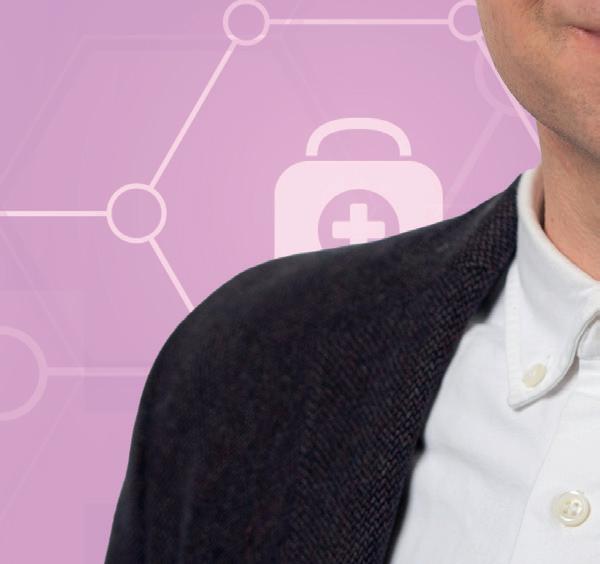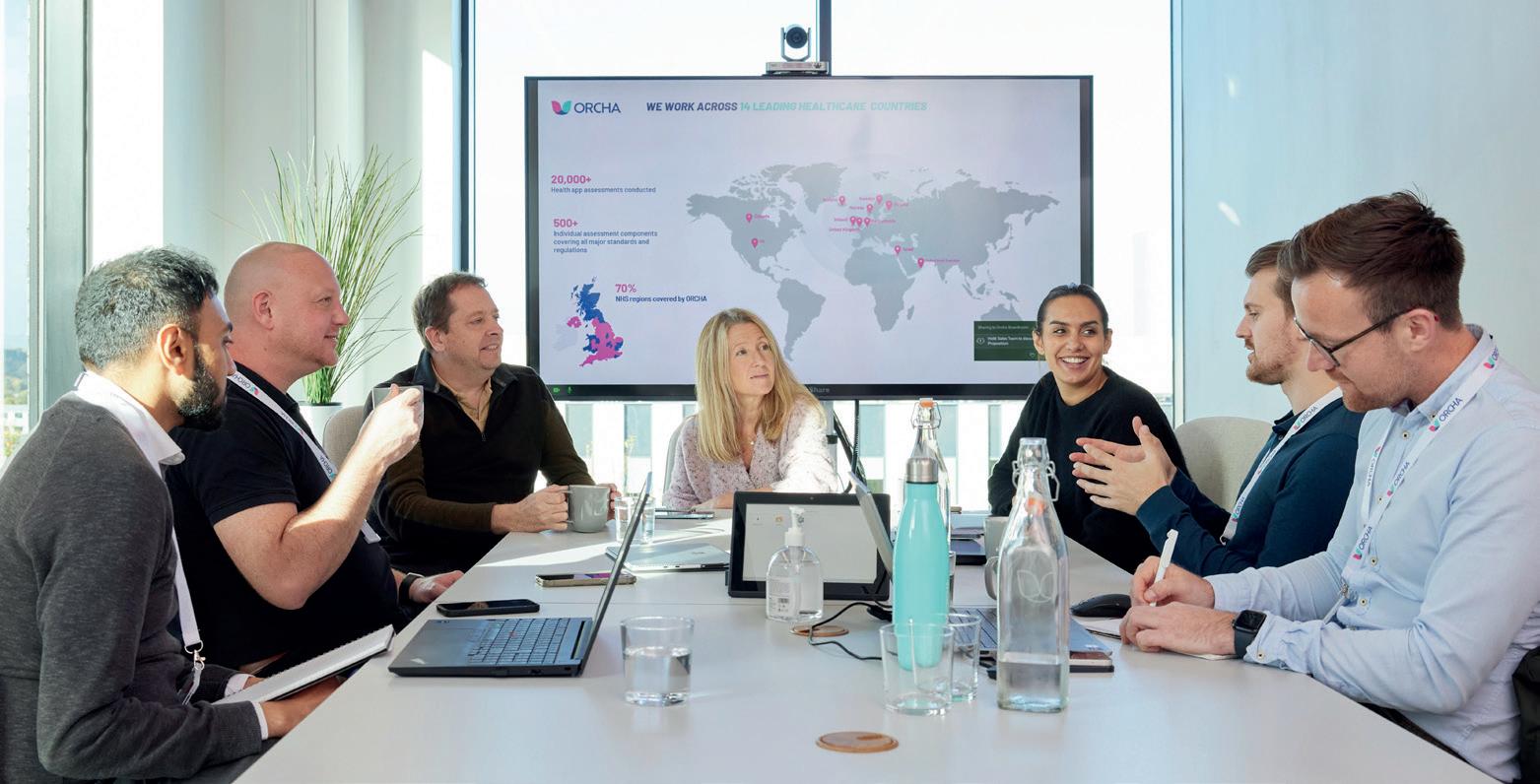
4 minute read
ON THE ROAD WITH The thınkers and doers taking clients further
The walls and shelves of the company are decorated with iconic designs and examples of innovation but one that stands out is the Sinclair C5 – an example of a remarkable innovation but a commercial failure. Hall provided some insight into the C5’s flop, that it was down to Sinclair’s failure to engage with the user enough, whether that was when it came to focus groups, or not showing prototypes to people or asking for critical analysis and to be challenged
So why does PD-M have a 1980s innovation on the wall that cost a lot of money with only 483 made?
“It ticks a lot of boxes as a pure innovation, but when you bring an innovation to market and don’t align it to your audience – which could be a surgeon, a patient, clinician, or a user –then it will spectacularly bomb.
“The whole point is when people visit us and say they’ve got a great idea, we ask if they have spoken to a user. If they think, ‘well, John think’s it’s great’ then we ask again, ‘have you actually spoken to your user?’
“There are a lot of people that innovate that say they have got an innovation, it’s a great piece of technology, and everyone is going to love it.
“We say your audience is not interested in what it is, it’s interested in what it does. They just want to know what the value is to them, and how they are going to engage with it.” Though the company is a design consultancy, talking to users is front and centre of what PD-M offers, and its expertise allows it to lead the client through the innovation journey.


When a product is presented to PDM, though it may sound brutal, the consultancy is required to pick holes in it to improve that innovation before too much investment goes into it, and so it can be tailored towards a more commercially viable product.
Hall explains that innovation is not a straightforward path.
“You don’t go, ‘I’ve got the idea,’ then make a prototype to show people and go into production. There’s so many twists and turns along the way, it’s far from a linear path. What we’re good at is leading clients through the innovation journey, navigating them, avoiding the pitfalls.”
A lot of PD-M’s work is with high growth start-ups, academics, SMEs, public companies as well as some research work alongside the NHS.
Many consultancy style companies in this space tend to have teams of 40 or 50 people. Though there might not be as many in the PD-M team, the company is bullish about its offering and states it has the capacity to work on big projects. The critiquing of innovations that are brought to them, along with the experience and skill to assemble and modify them, allows Hall to describe PD-M as the ‘thinkers’ and the ‘doers’.
Examples of the work undertaken includes providing thousands of face shields to the NHS during the COVID-19 pandemic, an example of its 3D printing capabilities, and an Acetone Breath Analyser with the University of Durham.
“What we’ve realised is that we’re equally as good and potent as those organisations.
“We could easily go off and do a lot of crazy stuff but what drags us back is being commercially aware and we have an obligation to the client to get it right first time. Just because you can doesn’t mean you should.


“People are now talking about user centred design, human-centred design, behavioural design, we’ve been doing this for years.”
So, what makes a good innovation? And how does it eventually get to market and become a viable commercial product?
“Every project should have a viable trigger. Either it's disruptive, more cost effective, it optimises new technology, it opens up a new market. Every project has got to have a trigger; a viable, legitimate trigger, and a reason why you should do it.

“What we’re good at doing with the innovations is everything that hangs off it. The business case, the commercial case, the usability, intellectual property, cost of manufacturing. It’s really asking those questions, otherwise people tend to have a bias and continue until someone tells them to stop what they’re doing, usually at a point where it’s too late. It comes down to having the right strategy, and this is something we’re really focused on.
“What we do is try to get all of the stakeholders on board to give them that objective view.”
PD-M summaries its mission for 2023 as ‘taking clients further’.

PD-M will be exhibiting at Med-Tech Innovation Expo on 7-8 June 2023 on Stand D48. For more information, visit www.med-techexpo.com.


Push Beyond Your Medical Design Capabilities
Advance, Expand and Differentiate Your Medical Design With Our Touch Solutions




Design advanced touch solutions with our medical product portfolio. We deliver excellent customer support and a one-stop shop experience that reduces complexity, cost and design time in your medical applications. Our robust medical and touch devices are additionally certified to IATF 16949 standards ensuring a high level of quality and customer satisfaction.

Our brand-new maXTouch® Knob-on-Display™ (KoD™) family of touchscreen controllers, for example, can increase your design flexibility while reducing system costs. This innovative, new technology allows you to smoothly apply various knob counts, shapes and positions to accommodate a variety of end-user products. You can also keep the comfort of a rotary encoder input device combined with an innovative design using multi-touch displays that can be developed into your modern-day ultrasound imaging equipment, patient monitors, electrocardiogram (ECG) machines and more.

We also offer a large portfolio of power management devices for your system, including Linear Low-Dropout (LDO) Regulators. LDOs can provide desired voltage levels with a constant and stable output. LDOs are the ticket to low power consumption and high-power efficiency and achieve a significantly smaller footprint compared to other types of regulators.
Ultimately, you can design an application with a display that relies on LDOs to attain higher resolution and a KoD controller for a simpler and more tactile manipulation of the settings in a water-resistant display. You can also create handheld medical equipment that uses LDOs to optimize battery life while using KoD controllers to provide traditional knob controls that are easily manipulated by a gloved hand.










